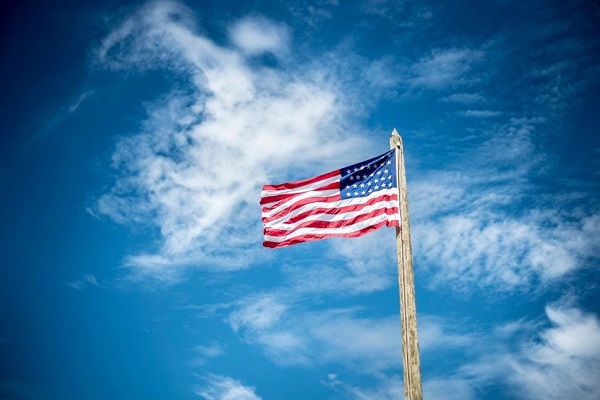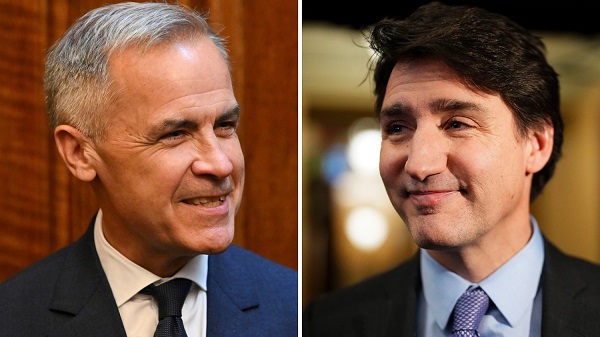Christopher Rufo
What the Left Did to Me and My Family

For the past five years, I have been fighting to defeat critical race theory and DEI.
This is a historic moment. For the past five years, I have been fighting to defeat critical race theory, gender cultism, and DEI. Now, President Trump has taken decisive action and instructed his administration to rip out these malicious ideologies root and branch, not just from the federal government but from all institutions that receive federal funding—universities, schools, corporations. All of it.
It has been a long road. The Left will try to memory-hole the recent past, but we must not forget a simple historical truth: the Left put America through a reign of terror after 2020. I have long hesitated to tell my personal story—I did not want to give my enemies the satisfaction—but now it’s time to lay out the facts. This is some of what the Left’s activists did to me and my family as they sought to intimidate me and shut me up.
When I lived in Seattle, they put up posters around my neighborhood with my home address, telling insane lies about me and instructing activists to show up at my door. Later, they sent letters to a few hundred of my neighbors, claiming I was a Nazi white supremacist. Death threats, references to my family, the whole deal. A few times, we had to pack up the kids and leave town.
One of these activists found one of my children at a park with the babysitter and yelled at him until he started crying. My son came home terrified. I figured out who this person was—a software developer who lived in the neighborhood—got his number, called him, delivered some “persuasive” words, and forced him to apologize to my son over the phone. I made sure he was much more frightened than my son had been.
Leftist activists organized employees within Microsoft to email-bomb my wife’s boss, claiming that she was a white supremacist. Thankfully, he thought it strange for her to be an Asian white supremacist and knew it was all a fabrication. I tracked down the ringleader and, “coincidentally,” he was fired a few months later. He overestimated his position and underestimated mine.
Then there were the calls and texts to our private numbers. Threats to rape my wife and murder my children. At one point, I reached out to the FBI about it, but the perpetrators had used number-cloaking apps and there was nothing law enforcement could do. I thought we had a lead in St. Louis and hired a private investigator to look into it, but the trail went cold. We fortified our home and studied up on the law. I was prepared to kill anyone who crossed the threshold to harm my family.
The institutions got in on it, too: organized campaigns to ruin my reputation, manipulate my Wikipedia page, cancel my speaking engagements, and list me on the websites of the Southern Poverty Law Center and Anti-Defamation League, in an attempt to get me banned from social media. The censorship apparatus put a target on my back, and the federal government egged it on. They all failed.
My experience is hardly unique. Many other conservatives have faced similar circumstances. Yes, our fight has been about CRT, DEI, and other ideological issues—but more than anything, it has been about safeguarding America’s free society from threats, violence, intimidation, and madness. That is why I fight. And, by the grace of God, why we are winning.
I have been able to continue this work, in part, because of my readers on Substack, who have provided an independent source of income for us. This is high-risk, high-reward work and my readers make it all possible. If you’re able, I encourage you to become a paid subscriber now.
Christopher Rufo
Radical Normie Terrorism

Why are Middle American families producing monsters?
In the 1960s and 1970s, America witnessed a wave of political terrorism. Left-wing radicals hijacked airplanes, set bombs in government buildings, and assassinated police officers in service of political goals. The perpetrators were almost always organized, belonging to groups like the Weathermen or the Black Liberation Army. These groups demanded the release of prisoners, denounced capitalism, or called for violent revolution against the United States. Their members were radical but largely lucid, justifying their actions with appeals to a higher cause.
In recent years, a new form of terror has emerged: decentralized, digitally driven violence organized not around coherent ideologies but around memes, fantasies, and nihilistic impulses. The perpetrators of this low-grade terror campaign do not belong to hierarchical organizations or pursue concrete political aims. More often, they come from ordinary families and lash out in acts of violence without discernible purpose.
At the close of this summer, two such incidents underscored the trend: the attack on schoolchildren at Annunciation Catholic Church in Minneapolis, Minnesota, and the assassination of Charlie Kirk in Orem, Utah. Though the first resembled the school-shooter archetype and the second evoked a JFK-style political assassination, both share psychological and sociological roots that make them more alike than they initially appear.
The new terror campaign is defined by a particular kind of psychopathology. It is perhaps tautological that anyone willing to kill innocent schoolchildren as they are praying or to assassinate a popular podcast host in broad daylight is pathological. But in these cases, both alleged killers—Robin Westman (formerly Robert Westman), and Tyler Robinson—left behind several warning signs that were psychological in nature.
Westman, the alleged Annunciation shooter, left a diary detailing fantasies and inner turmoil related to his transgender identity. While he decorated his weapons with pithy slogans, including “Kill Donald Trump,” “Burn Israel,” and “Nuke India,” these were memes and ironies, designed to give the appearance of ideology, concealing a potentially more disturbing motive. He was in the throes of a transgender identity crisis and had fantasized about being a demon and wanting to watch children suffer. The ideology was a brittle shell around a deeper emptiness that could only be satisfied with horror.
Robinson, Charlie Kirk’s alleged assassin, reportedly spent thousands of hours playing video games, had an account on sexual fetish websites, and played a “dating simulator” game involving “furries,” muscular cartoon characters that are half-animal and half-man. Officials claim that Robinson had moved in with a boyfriend who identified as transgender and to whom he confessed the crime. Like Westman, Robinson inscribed slogans on the shell casings he used in the assassination, including a message about noticing the “bulge” of male genitalia through women’s clothing. The fact that Robinson waited until Kirk began to answer a question about transgender mass shootings seems to reinforce the point.
In addition to their shared fixation with transgenderism, both Westman and Robinson immersed themselves in peculiar digital subcultures. These online spaces were not hubs of Marxism—or even transgenderism, strictly speaking—but of memes, attitudes, copycatting, in-jokes, and irony that, in certain cases, spilled over into violence. Both men allegedly acted out their fantasies not to advance a coherent ideology shaped by study or political organizing but to gratify an obscure personal urge.
In a note to his transgender boyfriend, Robinson wrote that he wanted to stop Charlie Kirk’s “hate.” While this may hint at a nascent ideology, the remark was perfunctory and incidental to the crime. Robinson did not seek to change policy or dismantle a system of government. He seems instead to have wanted to kill a man who spoke openly about transgenderism and embodied a vague notion of “hate.”
Another striking pattern in these crimes is that, at least from initial reporting, the alleged perpetrators came from ordinary, middle-class, Middle American families. Westman’s mother, for example, was active in her Catholic parish in Minneapolis. These were not visibly broken homes but functional households that nonetheless produced monsters—what we might call “radical normie terrorism.”
Radical normie terrorism poses a new challenge for law enforcement. As a veteran FBI agent told me, domestic law enforcement has no systematic program to identify, assess, and respond to this kind of online radicalization. The Bureau still relies on old-fashioned methods—processing tips, knocking on doors, interviewing witnesses—and, in most cases, cannot intervene against disturbed individuals until after they strike.
These acts of terror reflect something dark in our nation’s soul. The perpetrators were so dissatisfied with their middle-class lives that they sought to destroy the highest symbols of their society: murdering children in church pews, an attack on God; and murdering a political speaker in cold blood, an attack on the republic.
Stopping similar killers in the future will be a major challenge. The Internet is hard to police and culture hard to reform. But we should keep the stakes in mind as we work to protect the things we love and grapple for a solution, however elusive it may seem.
Invite your friends and earn rewards
Christopher Rufo
Charlie Kirk Did It All the Right Way

He exposed the lies at the heart of radical left-wing ideologies—and paid the ultimate price for telling the truth.
Like almost everyone in my circle, I have spent the better part of the last week in a stupor. The news of conservative activist Charlie Kirk’s assassination has left all of us who counted him as a friend or colleague in a state of shock and sadness.
I did not know Charlie Kirk well. But I had met him in various green rooms, appeared on his radio program, and worked with him to find capable staffers for the Department of Education. He was always genuine, idealistic, and dedicated to the cause. I’m still astonished by all that he accomplished in such a short period of time. He built an enormous organization, turned himself into a media star, advised the president of the United States, and built a beautiful family—all by age 31.
When we are in the fray of day-to-day politics, it is easy to get consumed by each new headline and triviality. But Kirk’s death marks a pivotal moment, requiring deeper reflection. His life, and tragically his death, reveal some profound truths about the man and about America.
First and foremost, Charlie Kirk did it all the right way. He was a conservative willing to wade into controversial territory. But he was always guided by the idea that debate is the great clarifier and that, in a democratic society, persuasion is the primary means of political change. He set up tables on campus. He debated his opponents. And he believed he could win through the ballot box.
Kirk’s death, and the subsequent reaction to it by the radical Left, underscored the arguments he had made during his time on the stage. For nearly ten years, Kirk had argued that transgender ideology, especially when paired with experimental medical procedures, would result in disaster. From the reports now emerging, it appears likely that the alleged assassin, Tyler Robinson, was radicalized online into anti-fascist and transgender politics. In their most extreme forms, both lines of thinking advocate a nihilistic embrace of violence—the antithesis of Kirk’s approach.
In fact, when he was murdered, Kirk was answering a question about the relationship between transgenderism and mass shootings, a phenomenon that seems to have accelerated in recent years. Kirk sought to engage his opponents in debate; his killer, quite possibly inspired by the trans-radical movement, sought to end that debate with a bullet.
The reaction to Kirk’s death by the mainstream Left has been equally troubling. Thousands of Americans, including students, professors, and even active-duty military members, have publicly cheered his assassination. Some have called for further violence against conservatives. Though I have covered left-wing radical movements for years, I was surprised by the number of people in the “helping professions,” including teachers and doctors, who embraced violent rhetoric.
How should conservatives respond? First, by drawing a line that Kirk himself exemplified: debate is healthy; violence is unacceptable. I’m glad to see that some institutions have terminated the employment of those who cheered on Kirk’s murder.
Contrary to the criticism that this represents a form of right-wing “cancel culture,” these firings were warranted. During the “woke” era, left-wing social media mobs sought the social annihilation of teenagers who sang rap lyrics and a Latino utility worker who cracked his knuckles the wrong way—examples of extreme and unjustified social policing. By contrast, a public school dismissing a teacher for applauding political assassination is a fair consequence.
All societies require boundaries. If there is no social sanction for celebrating violence, America will become a more dangerous place. Social trust, already fragile, will collapse.
On the question of transgender ideology, more information will emerge about Kirk’s alleged killer. But more than enough evidence already exists for federal law enforcement to consider radical transgender ideologues a threat to the civil order of the United States—much like white nationalists, neo-Nazis, militant “anti-fascists,” and other hateful groups. Some figures in the Trump administration, such as policy adviser Stephen Miller and Vice President J. D. Vance, have already indicated that they are ready to take action to enforce the law against violent movements.
Charlie Kirk sacrificed his life for truth. We should honor his legacy by standing firmly on principle, engaging in political debate, and, when necessary, enforcing the law against those who would organize violence in the name of politics.
-

 Alberta1 day ago
Alberta1 day agoNational Crisis Approaching Due To The Carney Government’s Centrally Planned Green Economy
-

 Carbon Tax19 hours ago
Carbon Tax19 hours agoCarney fails to undo Trudeau’s devastating energy policies
-

 Business20 hours ago
Business20 hours agoThe UN Pushing Carbon Taxes, Punishing Prosperity, And Promoting Poverty
-

 Agriculture1 day ago
Agriculture1 day agoFederal cabinet calls for Canadian bank used primarily by white farmers to be more diverse
-

 Health18 hours ago
Health18 hours agoNEW STUDY: Infant Vaccine “Intensity” Strongly Predicts Autism Rates Worldwide
-

 COVID-192 days ago
COVID-192 days agoNew report warns Ottawa’s ‘nudge’ unit erodes democracy and public trust
-

 Business17 hours ago
Business17 hours agoClimate Climbdown: Sacrificing the Canadian Economy for Net-Zero Goals Others Are Abandoning
-

 Great Reset1 day ago
Great Reset1 day agoCanadian government forcing doctors to promote euthanasia to patients: report





